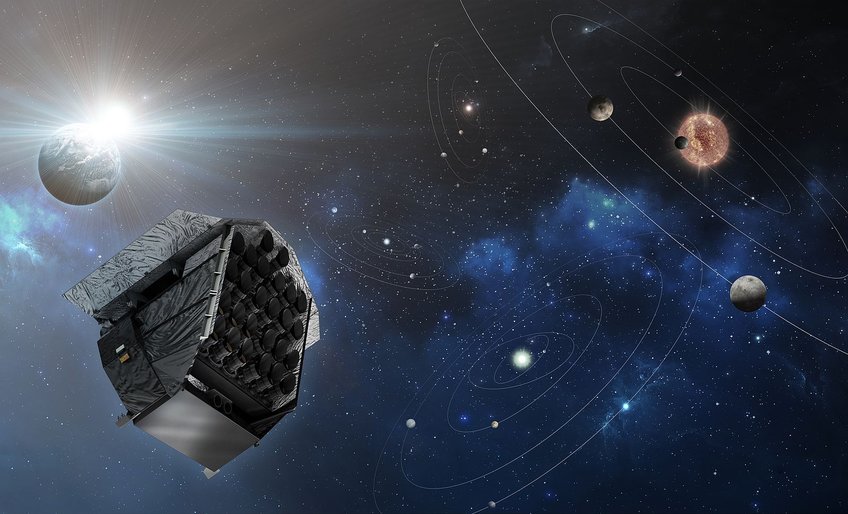
PLATO Mission
PLATO will provide key information (planetary radii, mean densities, ages, stellar irradiation, and architecture of planetary systems) needed to determine the habitability of these unexpectedly diverse new worlds. PLATO will capitalise on tremendous developments in high-precision photometry from space and ultra-stable ground-based spectroscopy techniques.
PLATO will answer the scientific questions:
- How do planets and planetary systems form and evolve?
- Is our solar system special or are there other systems like ours?
- Are there potentially habitable planets?
For this purpose, it will focus on the small planets orbiting in the habitable zone of stars, including stars like our Sun. PLATO will operate for at least four years, and provide a huge database for all kinds of planets and planetary systems with well determined parameters. The PLATO observations will complement other surveys (Gaia, TESS, etc.) and provide precious information on planetary systems and stars for generations of scientists to come. Since PLATO is designed to perform high-precision asteroseismology on tens of thousand of solar-type stars, it will also revolutionize the study of stellar structure and evolution.
